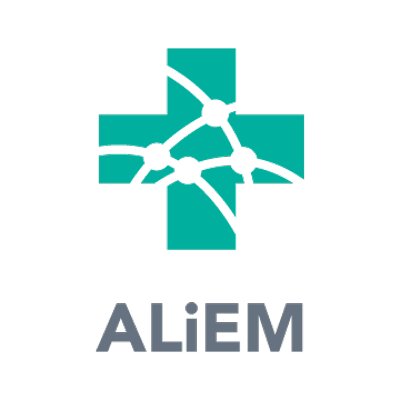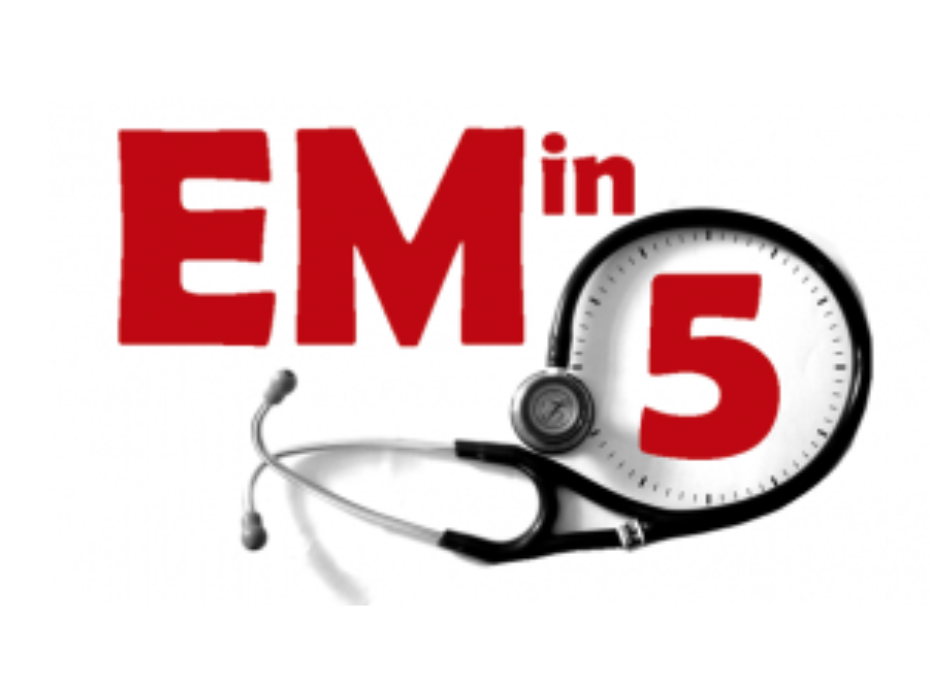Nursing FOAMed Review #8 (Feb 1st – Feb 11th)

The large amount of cancer patients we receive in the ED shouldn’t really surprise anyone – cancer is the second leading cause of death globally. But nursing school does a poor job of preparing us for these ED visits. There is an oncology section in every Med Surg nursing text, but when a renal cell carcinoma pt visits your ED, you aren’t going to be treating his RCC – you will most likely be emergently treating a disease process caused by his RCC treatment. This EMDOCS post is a great refresher for some of the more common cancer related emergencies we see in our EDs. Some interesting pearls:
- IDSA guidelines for febrile neutropenia
- Why your cancer pt presenting as an appendicitis pt may actually have necrotizing enterocolitis.
- SVC Syndrome and a pretty cool bedside test called the Pemberton’s sign
- Just in case AEIOU-TIPS wasn’t a long enough acronym for altered mental status, remember that the list increases with oncological emergencies to include: “CNS metastases, raised ICP, electrolyte disturbances such as hypercalcemia, medication side effects, and hyperviscosity syndrome”.
- Renal failure and Rasburicase – also when and what to look for in Tumor Lysis Syndrome
Don’t know the difference between a partial simple seizure and a partial complex seizure? Having trouble remembering whether to prep for EEG, EKG or NCHCT? Don’t worry. EMDOCS has reposted a great review from CoreEM. Simple algorithms, and even simpler hand drawn diagrams, can help you remember what is what. This is a worthwhile 5 minute read.

If you have a difficult time with endocrine patho (doesn’t everyone?) EMCRIT has published a new chapter in the Internet Book Of Critical Care that is perfect for you. Thryoid storm has a high mortality and high missed diagnosis rate. Review Josh Farkas’ new chapter and come prepared.
- Clinical presentation along with a list of precipitating factors
- Beta Blockers – why we need to proceed with caution. Also an interesting aside on the use of Esmolol vs Propanolol
- A great thyroid storm treatment checklist in order to check and see if you are educated about/prepared for multiple treatment modalities.
- Watch the attached video from EMin5 at the bottom of the IBCC chapter.
- http://emcrit.org/ibcc/thyroid-storm/
Rory Spiegel explains why we don’t need to work up every patient presenting in the ED for PE. Spitting in the eye of the results of the PESIT trial is fun, spitting in the eye of the results of the PESIT trial because there is better data published in Annuls of Emergency Medicine is more fun. So read this, and now you can shake your head in disbelief every time someone orders a CT on a well appearing patient who had an idiopathic syncopal episode – AND cite a good source as the reason you’re why you are shaking your head.
More on REBELEM on this particular subject here

Short and simple from ALiEM, Jennifer Rabjohns brings us a review on ETCO2 and why we should be using it during our resuscitation efforts. If you aren’t using ETCO2 you’re really missing the boat. This tool helps us shape care, manage airways, decide on efficacy of compressions, and even gives us information that is useful in deciding when to “call the code” in patients that aren’t responding well to resuscitation. Not that I think that AHA is right all the time, but this is a standard of care in resuscitation – and one that I think we can all get behind.

CanadiEM throws more shade at the AHA’s infatuation with post resuscitation “Targeted Temperature Management” or TTM. Formerly known as “Therapeutic Hypothermia”, TTM is what I can only guess is the AHAs attempt to put this intervention on life support while they desperately search for ANYTHING that bolsters their argument for its use over the last 15 years. TTM isn’t causing harm. So there is that. So I would never waste my breath arguing AGAINST TTM – but good evidence supporting its use across the board for EVERY ROSC patient? I’m still looking for something that gives me the aggressive optimism displayed by the AHA.

CORE EM via Michelle Romeo has a great review on Le Fort fractures for all you trauma junkies out there. Check out this article for:
- Visual anatomic break downs of the different Le Fort fractures (type I, II and III)
- Management criteria with some really interesting pearls (43.5% of Le Fort III fractures require tracheostomy!?)

So at first I wasn’t going to write anything about this. But First10EM was the third or fourth FOAMed site that I saw with a review on this the NEJM article Andexanet Alpha. This is a worthwhile read for a number of reasons:
- The tyranny of for profit medical publications in knowledge transfer bias is a worthwhile discussion for anyone interested in EBM. The democratizing effect of FOAMed knowledge transfer comes with its own downsides – but not acknowledging the implicit biases in the design of for-profit medical publications is worse than dangerous.
- Justin Morgenstern does a really fantastic job breaking down some of the interesting tricks that go into questionable medical science publishing. I refrain from calling it junk – but there is an argument to be made there as well. How do drug companies manage to publish trials that show great outcomes when there is no scientific evidence of a great outcome? Read this article and click on some of the hyperlinks to find out.
- A lot of these expensive reversal agents on the market seem to slip into use in the same manner as Andexanet. KCentra is another one of these drugs with great optics but questionable patient outcome applications. See Rory Spiegel’s opinions about KCentra here and here.

I’ve been doing ultra sound guided IVs for a couple of years now – and I can say from a lot of bedside experience that it is a safe and dependable way to get access on your “hard stick” patients. Dr. Salem Rezaie from R..E.B.E.L.EM has a pretty great review on the efficacy and use of this procedure here, and there are some really interesting point:
- Discussion of bevel up vs bevel down for USIV placement.
- Why we should, or maybe should not, be using tegederms as barriers for our US probes???

I know that this is supposed to be an early February FOAMed review, But Dr Anna Pickens put out a great EMin5 video about measles. And I think we all know that we need to be more vigilant now about potential measles patients in our EDs. Every time a parent trusts a washed up 90s quasi porn star pop culture icon more than they trust science, we end up with an unvaccinated experiment walking into our ED. Watch and learn – and remain vigilant in the face of idiocy.
- 90% transmission rates??
- Contagious droplets in air for up to 2 HOURS??? Incredible
- How to look for Koplic spots – (I didn’t even know what Koplic spots were before this 5 minute video)
Attendings & AHA Certifications

AHA Every Two Years
I have been an AHA instructor for about 4 years now. I can honestly say that most days I love to teach, but like most people, I have certain groups that I prefer. My favorite classes tend to be heavy with advanced practitioners and doctors – oh, and I love teaching residents. AHA material can get dry after a while, but a great practitioner can be a walking and talking reference manual for my recertification courses; full of facts, able to cite pertinent studies from memory and, at least in my experience, most are willing to drop some awesome pearls for the benefit of the other members of the class.
But not all classes are a pleasure to teach. Recently I taught a PALS class that didn’t go so well. One of my favorite EM docs had a group of 3rd year residents that required a short notice recertification. A multitude of factors made this class less than ideal, but the attending and the training center both bent over backwards to accommodate the graduating residents. Let’s just say that it was a less than positive experience. The only question during the class was “how long is this going to take?”. The students chatted through the video material, generally tried their hardest to not pay attention, and engaged in such loud side conversations during lecture that I had to ask them to stop multiple times. It was, to say the least, a very disappointing class.
But here is the thing: I get it. Doctors spend residency being grilled and challenged and tested and pushed. These particular residents have studied under incredible doctors and have done rotations at one of nation’s leading children’s hospitals. They are eager to move on to new attending jobs, they are exhausted from years of outrageous study, and have (nearly) completed the almost super-human task of becoming a licensed physician in the US. Beyond their level of training and preparedness, there is also the fact that AHA courses are, unfortunately, just another merit badge class. Hospitals use these courses to create the convenient situation where the hospital can outsource provider training and therefore all liability and responsibility. Why spend time and money investing in staff education and training when the AHA gives out these fancy cards? I get it – it can really feel silly taking
So why in HELL do my outrageously overqualified doctors need to take ACLS and PALS? Who thinks this is a good use of time?I’ve created a checklist. It isn’t exhaustive and it’s just my opinion, but if you are a graduating resident, or even an attending, and you can only be dragged kicking and screaming in order to recertify PALS or ACLS, perhaps this list might help put these AHA classes in a different perspective.
#4 – You Know What They Say About Assumptions…
I love my residents. They are smart. They are incredibly motivated. And most of all they tend to have a sincere passion for medicine. But not every doctor I’ve ever recertified has been well rounded. I wish I could say that docs don’t need this stuff, but unfortunately there are some attendings out there that haven’t really studied this material in years. I’ve been in codes with docs who do some downright goofy stuff. I’ve had residents shoot me incredulous looks while we try to pace asystole or take 5 minutes to sono a coding patients heart – all under the orders of an attending. So no, we can’t assume doctors are proficient in AHA standards and you can’t skip the class – even doctors should be reminded of the ECC standard every two years.
#3 – Sharing Is Caring
This is especially important if you are one of the few, or the only, doctor in the classroom. Not everyone has your education, knowledge and experience. Please be a positive resource to the rest of the class! As mentioned earlier, the AHA material can get pretty dry. If you have a good story that pertains to the information being taught, please chime in. Some of the best and most memorable teaching moments have come from doctors telling the class how something works, or doesn’t work. Assist the instructors with some of the material – for crying out loud help make this stuff interesting! You have better stories than us. Please share and make this a great educational experience for everyone.
#2 – Times They Are a-Changin’
The AHA guidelines are updated every 5 years. But our field changes daily. This is a fantastic opportunity to sit down with your fellow doctors and review basic guidelines. If the guidelines are similar to your practice than great! Let’s discuss the evidence in support of the AHA benchmarks, and even better, lets discuss why we don’t do what we may have done in the past. But sometimes things change faster than the AHA can keep up with. Pediatric therapeutic hypothermia anyone? Why or why not? Antibiotics for pediatric sepsis? But of course – but what cocktail are you using? How much, at what point, and what are the other options? These classes are an incredible opportunity to hone your skills. The resident class I taught argued with the PALS recommendation for fluid resuscitation for pediatric cardiogenic shock. One of the students went so far as to say that fluid was stupid and that dopamine was the only serious option. Maybe that is true, but maybe there are other opinions in the room. Is there controversy right now about dopamine versus norepinephrine in shock patients?* If you are too busy proving you are too smart for the AHA course material, we won’t ever get to opportunity to have some pretty important discussions.
#1 – It’s Not All About You
This is the most important thing to remember: the standards set forth by the AHA may seem simple, pedantic, or even incorrect to your well-educated medical mind, but this is what all of your nurses, NPs, and PAs know as gospel! Your education and experience doesn’t mean you’re beyond AHA standard – it actually means you are responsible for the entire resuscitation team’s grasp on the AHA standards. Stop recertifying AHA courses with the idea that the instructor is only here to test you out on your skills. You’re an attending. You think I’m impressed that you know that ventricular fibrillation needs defibrillation? Of course not. Take this recertification course as an opportunity to sit down and think about your team. This isn’t an 8-hour recertification class for you – this is a course where you get to familiarize yourself with your staff’s training standards. I know these classes may seem pedantic to you, but this might be the most cutting edge resuscitation science your nursing staff has ever been exposed to. Don’t like what you see? Fantastic! Ask me why the AHA isn’t talking about dual sequential defibrillation for VF electrical storm. Ask me about ECPR. Let us discuss where the AHA gets it right and where you think it might get it wrong. These classes offer you the opportunity to see how your staff is being trained. Don’t like what you see? Fine – take the class and then go talk to your nurse educator and come up with a plan on how to expand the curriculum. But you have to take the class. I get that the videos are boring, and I know you’ll pass the test and breeze through the mega codes. But you have an opportunity here to be a great healthcare leader so take it – you owe it to your patients, and you owe it to your team.
